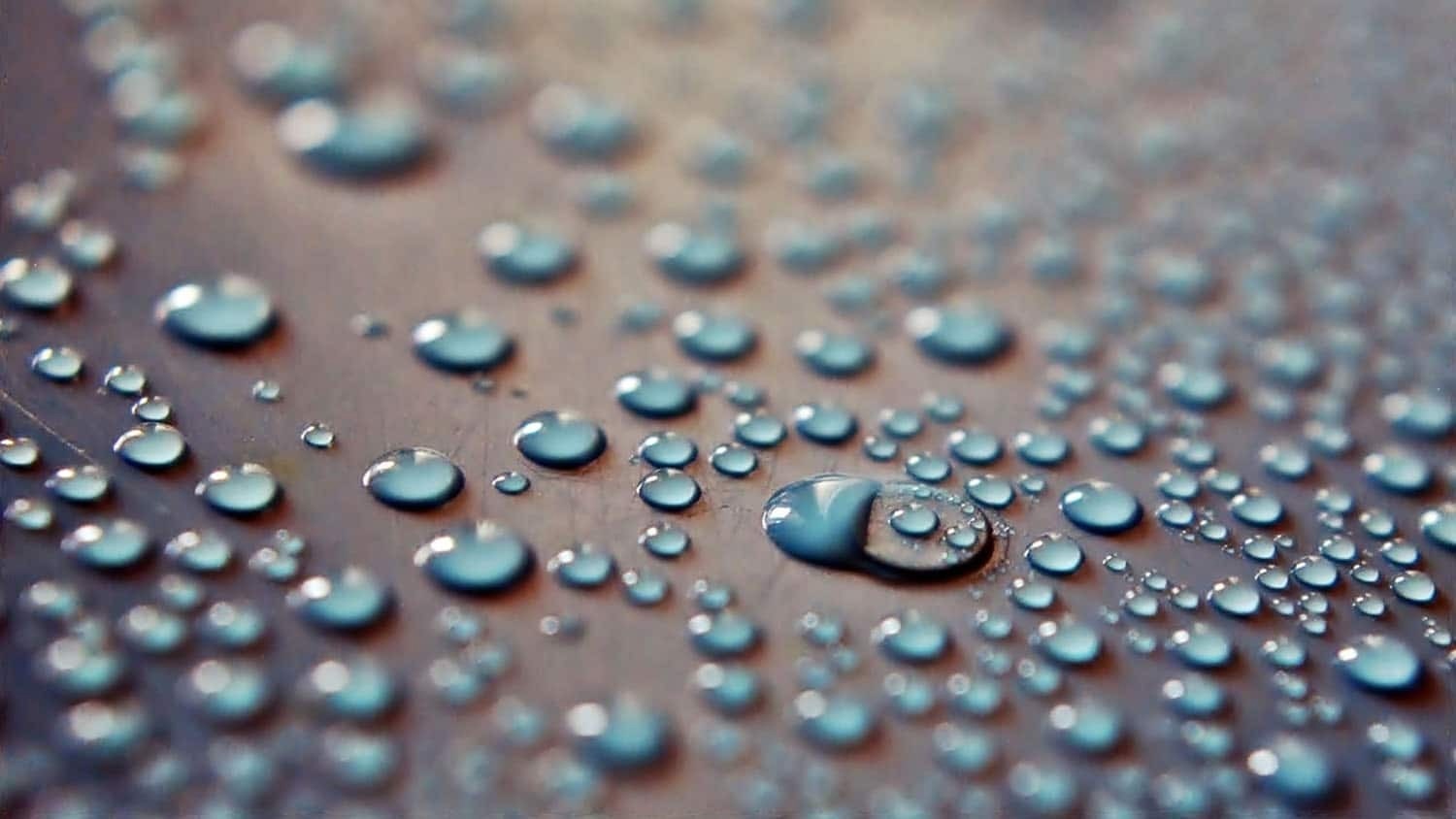Engineered surfaces can be both hydrophilic (meaning they have a strong affinity for water) and exceedingly slippery, according to scientists. The study outlined in this article contradicts current understandings of the formation of slippery materials and provides a new avenue of study for the field.

Image Credit: Nithya Ramanujam.
This finding is counter-intuitive, since the longstanding view has been that slippery surfaces tend to be hydrophobic—they repel water.
Arun Kumar Kota, Study Corresponding Author and Associate Professor, Mechanical and Aerospace Engineering, North Carolina State University
Kota details, “But we’ve now demonstrated a way to engineer the surface of materials that makes them both very slippery and hydrophilic, or SLIC, surfaces. We have some specific applications where we think this may be useful, but this is essentially an unexplored class of surfaces. A lot of work needs to be done to fully understand the scope of potential applications.”
We’ve also articulated exactly how these SLIC surfaces can be designed, so that other researchers can expand what appears to be a very promising field.
Arun Kumar Kota, Study Corresponding Author and Associate Professor, Mechanical and Aerospace Engineering, North Carolina State University
Previous methods of making a solid surface slippery used one of three techniques. One of the three methods included texturing the material to capture a layer of air against the surface, with the air pocket acting as a lubricant.
The second strategy was to texture the material's surface and confine a layer of liquid lubricant against it, allowing it to slide through other liquids or solids. Destruction of the texture of the surfaces caused by prolonged use makes them less slippery in each of these scenarios. Similarly, the loss of gaseous or liquid lubricants over time reduces their slipperiness.
The third technique is to uniformly attach molecules to smooth, solid surfaces. Liquids can easily slide against the surface due to the uniformity and smoothness of the surface.
However, the vast majority of the molecules used to create these slippery surfaces are hydrophobic, because the longstanding view has been that slippery surfaces tend to be hydrophobic—so that’s what researchers have focused on.
Arun Kumar Kota, Study Corresponding Author and Associate Professor, Mechanical and Aerospace Engineering, North Carolina State University
A good example of this is a non-stick pan. As the surface is hydrophobic, when a small amount of water is poured onto the surface, the water is repelled by the surface and forms a very rounded bead. The bead of water glides off because the surface is slippery.
However, being slippery and being hydrophobic are not the same thing. SLIC surfaces demonstrate how something may be both hydrophilic and slippery. When water is poured onto a slippery, hydrophilic surface, two things occur. One, the water will have a strong affinity to the surface and, thus, it will spread out into a flattish bead. Two, as the surface is also slippery, the flat bead of water will slide off without leaving a trace.
Kota states, “There have been very few papers over the years that have touched on hydrophilic, slippery surfaces, and this area has really been overlooked. This new work demonstrates that hydrophilic, slippery substances work, and lays out the physics behind how it works.”
The experts are particularly excited about two types of applications: biomedical technologies and condensers.
The scientists expect to use the anti-fouling capabilities of SLIC surfaces in biomedical applications. In short, proteins have a very tough time adhering to SLIC surfaces.
Kota elaborates, “Proteins cover almost the entire surface of both conventional hydrophilic materials and slippery, hydrophobic materials in about a minute. We’ve demonstrated that, even after 30 hours, virtually no proteins are able to adsorb on a SLIC surface. This is useful in many ways.”
“For example, this resistance to protein adsorption would make it more difficult for undesirable bacteria to grow on a surface, could significantly reduce blood clotting on biomedical implants, and so on,” added Kota.
Condensers are used in a variety of technologies, including air conditioners and power plants. These components feature a cool surface that collects water vapor. Condensed water produces a coating on traditional hydrophilic surfaces, thereby acting as an insulator for the condenser surface and lowering its efficiency. Water vapor will gradually form beads on slippery, hydrophobic surfaces and eventually slide off.
Kota adds, “But on a SLIC surface, the hydrophilic nature of the surface allows water vapor to condense more quickly, and the slippery nature of the surface means that water still slides off easily — making the condensers more efficient. No pun intended, but we’re really just scratching the surface of what might be possible with SLIC surfaces.”
The study was published in the journal Matter. The study’s Co-first authors are Kota’s students Sravanthi Vallabhuneni, a Ph.D. student at NC State, and Hamed Vahabi, a recent Ph.D. graduate from Colorado State University.
The study was co-authored by Wei Wang, a former postdoctoral researcher at NC State who is now a part of the faculty of staff at the University of Tennessee, Mohammadhasan Hedayati, Matt Kipper, and Diego Krapf of Colorado State University, and Nenad Miljkovic of the University of Illinois at Urbana-Champaign and Kyushu University.
The study was supported by the National Science Foundation, under grant number 1751628, and by the National Institutes of Health, under grant number R01HL135505.
Journal Reference:
Vahabi, H., et al. (2022) Designing non-textured, all-solid, slippery hydrophilic surfaces. Matter. doi.org/10.1016/j.matt.2022.09.024.